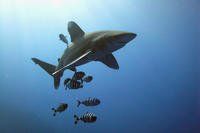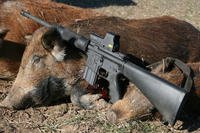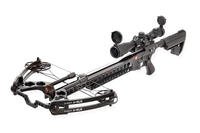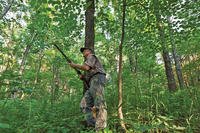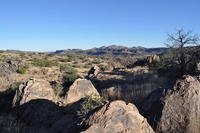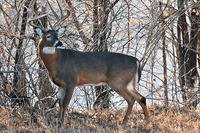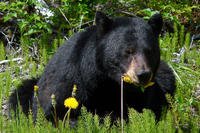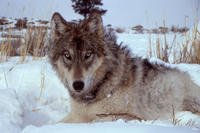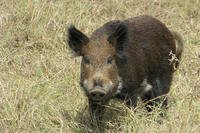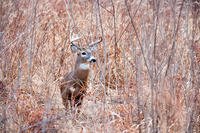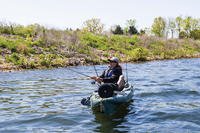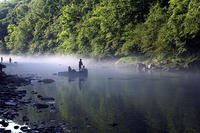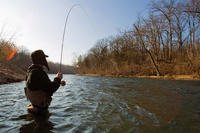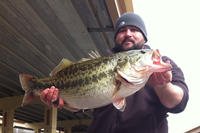The woods are filled with countless edible wild plants.
by David Hart
Like so many others who were drawn to the woods at a young age, Mark Warren practically lived in the creeks and streams around his boyhood home. But as he matured, so did his desire to not just be a spectator but also to participate in the woods around him. So Warren began eating the very plants he took for granted. The woods, he learned, are filled with countless edible wild plants and he now supplements his diet of store-bought foods with roots, berries, leaves and stalks of dozens of native plants.
The first step to become a skilled forager, says Warren, is to learn how to identify those plants that are edible. He figures there are over 100 in the mountains of Georgia, but there are just as many that can make you sick or even kill you.
"There are even more than that that just taste bad," he adds.
He recommends a few field guides, including Newcomb's Wildflower Guide, a comprehensive book that makes wildflower identification relatively easy. The flowers are the telltale way to positively identify specific plants, he says. Warren also suggests finding a copy of a book by Elias Dykeman on identifying edible wild plants.
"Stalking the Wild Asparagus by Euell Gibbons is good, but it is very basic. It was probably the first book that brought edible wild food gathering to the mainstream," he says.
Warren's desire to learn more about the woods than just a cursory knowledge of plant, bird and animal identification evolved into a lifestyle that eventually turned into a living. He runs a survival, primitive skills and wilderness school based on the traditions and knowledge of the very people who lived on foods gathered from the woods — Native Americans.
"I started going to organized seminars and walking tours given by experts in edible wild plant identification. I was always first in line and always had the most questions," he recalls. "I would strongly recommend taking some seminars because if you go out with just a book you'll probably end up with more questions than answers."
Living off the land is a full-time job, he admits, which is why he recommends foraging — the popular term for finding and eating wild foods — as a great hobby and a good way to survive under dire circumstances if you get lost in the woods. You don't have to know every edible plant to have fun or to survive, but it's vital to know a few basic things. Most important, stresses Warren, is to leave it alone if you have the slightest doubt.
"You often hear that if you want to learn what's edible and what isn't just watch what the animals eat. That's just plain dangerous because wild birds and animals have, in some cases, completely different digestive systems than humans," he says. "The most important thing to remember is to leave a plant alone if you aren't 100 percent positive that it is edible. I don't even teach mushrooms in my classes because they can be confusing and they can kill you very quickly."
Common Plants On The Ready
There are, however, some common plants that are easy to identify and relatively easy to prepare. Sure, anyone can find blackberries, raspberries and even wild grapes, but there are so many other edible plants that either take just a little extra effort to find or a little additional knowledge gained through an expert or a field guide. Raw acorns are extremely bitter, but after they are ground, soaked and worked into flour, they make excellent pancakes. Young cattail shoots are as good as any store-bought vegetable and the tuber of Solomon's seal is as tasty as any cultivated potato. Jerusalem artichokes are also easy to identify — once you know what they look like — and they are a pleasing addition to a meal of venison steaks. What better way to supplement a wild game dinner than with vegetables and other plants gathered from the very place you harvested the game itself.
To learn a few basic edible plants, Warren suggests going in the spring or summer when plants are leafed or flowering. They are far more recognizable then, but he says some beginning students actually start in the winter, when plant identification is hardest and foraging requires far more time and effort.
"In a way, they got the hardest part of it out of the way first. It can be very difficult to find edible plants after they have died back for the winter. Once you learn that, finding edible plants in the spring and summer is just a matter of spending time in the woods," he says. "Of course, you aren't going to blunder into a variety of foods, but if you spend enough time practicing, you'll learn enough to add to your variety of store-bought foods."
Think about how impressed your hunting partners will be when you pull a plant from the ground and pop it in your mouth. Even more important, knowing which plants are edible and which aren't make a more rounded outdoorsman, and that could some day save your life.

